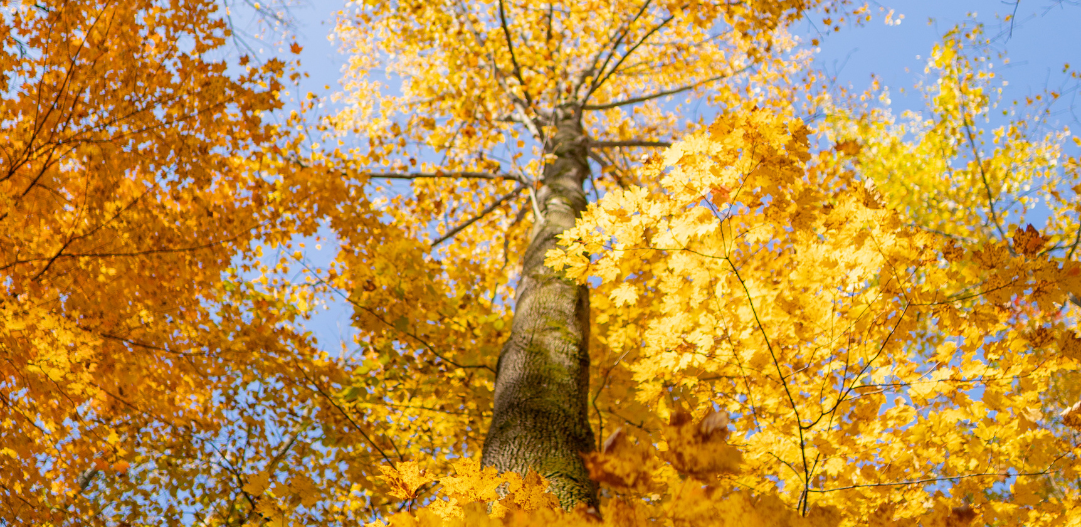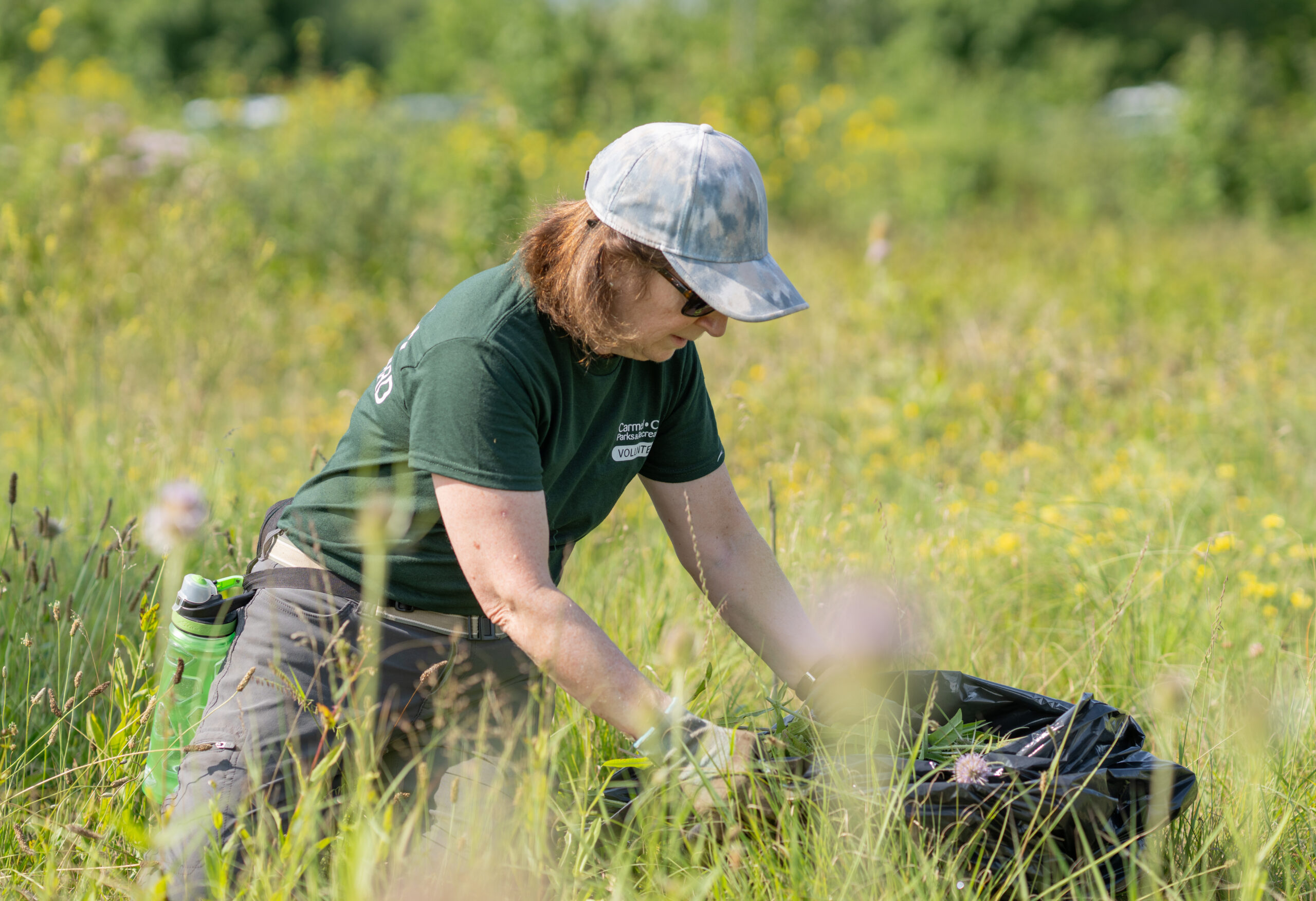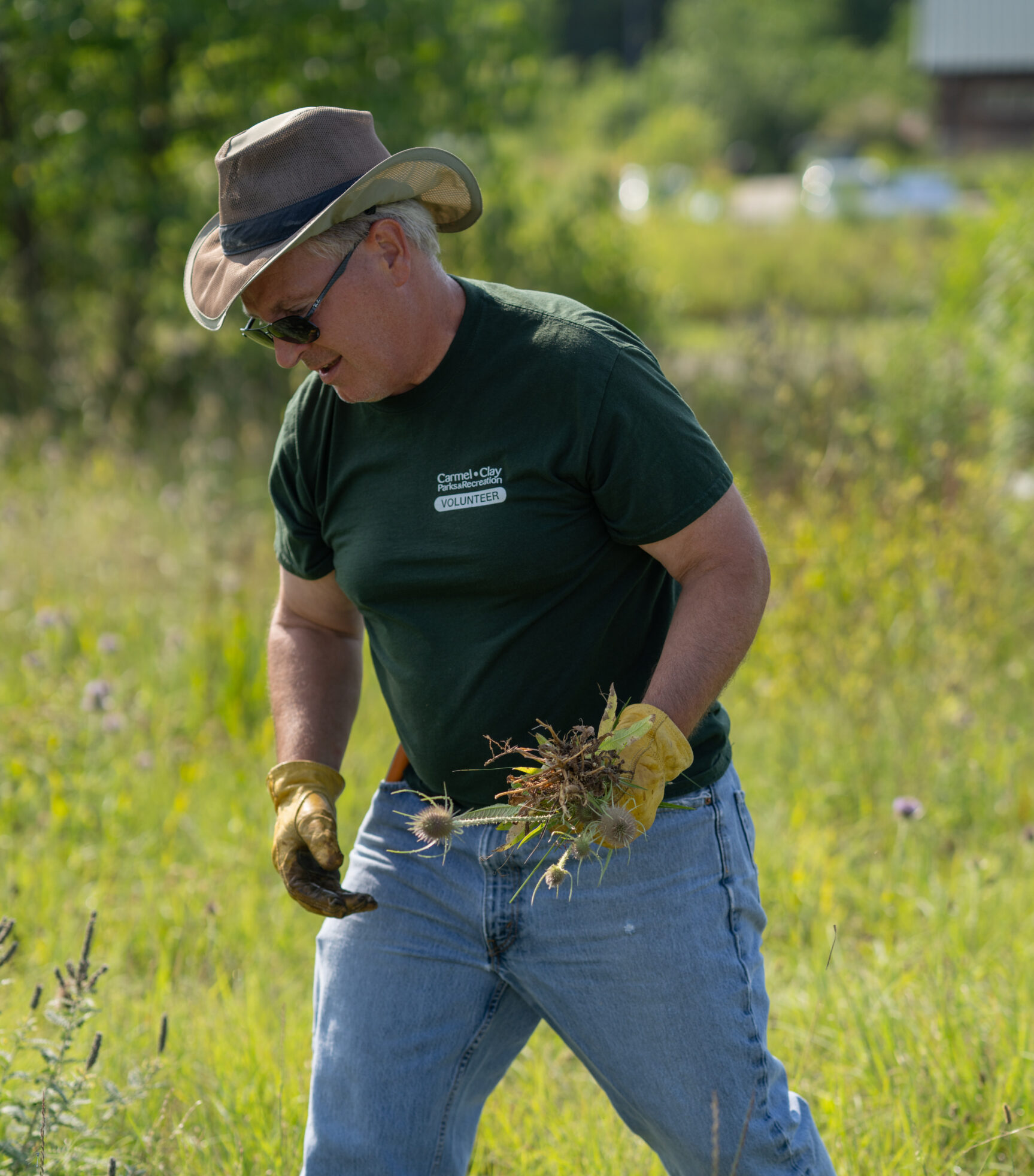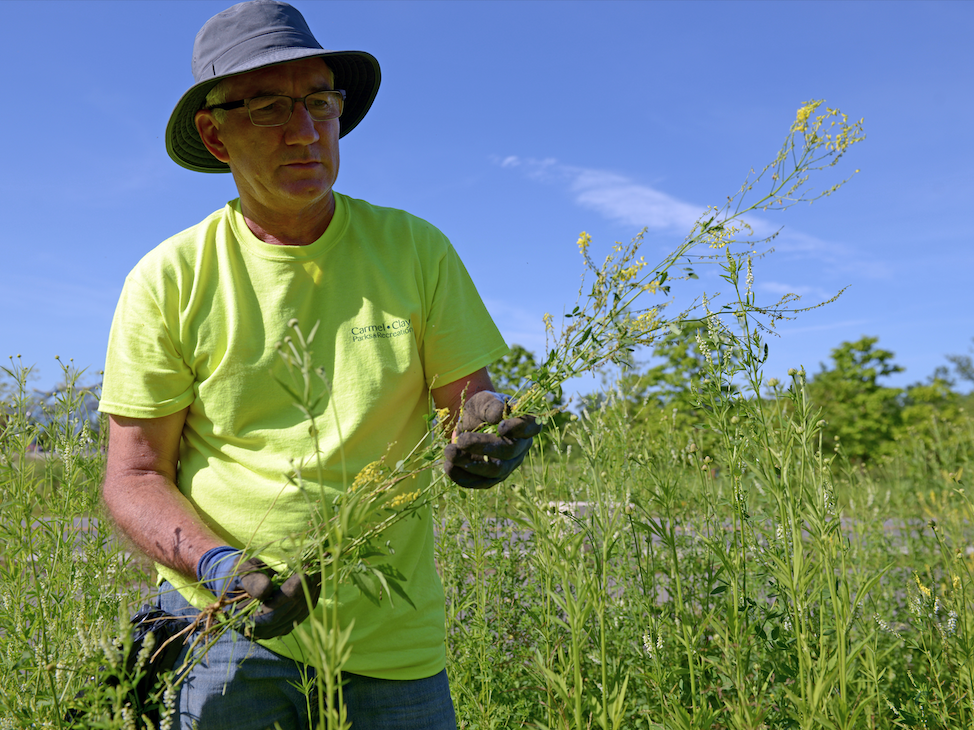Park Stewardship
What is stewardship? Stewardship is the responsibility or role of taking care of something.
So, what is park stewardship? It’s the conservation of our natural resources over an extended period. It is caring for the land, air, and water that make up our parks.
We value stewardship as an essential role to keep our parks and natural resources viable and beautiful for future generations. Our park stewardship programming protects and upholds the natural areas in our parks by engaging our community in park stewardship volunteer opportunities and teaching about natural resources and their importance through nature education programs.
We invite you to explore our park stewardship pages to learn more about our land’s natural history, our efforts to sustain our resources, and even ways for you to support native habitat in your own backyard!
Become a Park Steward
Do you want to contribute to managing the 700+ acres across our parks and greenways? Join us as a park steward volunteer! Engaging with our park stewardship program will teach you transferrable life skills and ensure you are making a difference for the land in our parks while leaving them healthier for future generations.
Register
Explore Our Resources
|
|
|
|
|
Seasonal Stories + Activities
Birds to Spot in Indiana This Season
Spring in Indiana can be unpredictable. Some days are warm and mild; the sun shines down on the forest floor, wildflowers bloom, and hibernating critters start to stir. Other days begin with a nip of frost in the air; with gray skies and cold, windy nights, it’s almost like we’re transported right back to winter. While we can’t always predict the weather, we can predict what birds you’ll see pass through Indiana on their way back north! Let’s learn about a few migratory birds you can expect to spot this spring.
Sandhill Crane: In the spring, Sandhill Cranes migrate through Indiana, with large flocks (some reaching up to tens of thousands) stopping in areas like Goose Pond Fish & Wildlife Area and Jasper-Pulaski Fish & Wildlife Area. Fun fact: the Sandhill Crane’s unique, long rolling call is due to their long windpipes, which coil into their chest and causes their low pitch.
Yellow-rumbed Warbler: This migratory bird is nicknamed “butterbutt” due to the distinguishable patch of yellow on their rump! Unlike other warblers, Yellow-rumbed Warblers can withstand Indiana winters due to their unique ability to digest berries when other food sources are scarce. Although these birds are still known to migrate south for the winter, they return to Indiana in abundance come spring!
Indigo Bunting: Despite their bright hue, you may have a harder time spotting the Indigo Bunting in your backyard. These songbirds can typically be found in weedy fields and shrubby areas near trees during day, but they migrate at night – in fact, a study conducted in 1960 proved that Indigo Buntings use the movement of the stars to navigate.
Frequently Asked Questions
-
How do I submit my volunteer hours?
If you are already a volunteer with us, you can log in to your NEON account and input your hours.
Here’s a full tutorial on how to create an account and log your hours.
-
What kind of time commitment am I signing up for?
We have one-time opportunities to give back to the parks for those who do not have unlimited time to give. We also have long-term opportunities for volunteers to become fully engaged in our Citizen Science and Park Stewardship programs. These volunteers are the ones we engage with regularly. These folks are the eyes and ears of our parks helping grow our programs long-term.
-
What if I sign up for an activity and it says I'm on a waiting list?
To ensure we have the appropriate number of volunteers for a given project, we set deadlines for Park Stewardship activities. If you sign up and are put on a waiting list, you will be notified if a spot becomes available.
-
Are there age requirements for park steward volunteers?
Anyone can be a park steward volunteer! Park Stewardship is for everyone, and we welcome all. If you are younger than 16, you are required to have a parent/guardian attend the event with you.
-
Who do you partner with in your conservation efforts?
Conservation is not a one-stop-shop. Plants and animals do not know fence lines or parcel boundaries. They are fluid and they are located where they are going to thrive. We engage with several community and state partners to move our mission forward. It is important to work together to achieve success when we all have a similar end goal–the long-term sustainability and ecological balance of our natural resources.
Partners we work with to help move conservation forward:
- Indiana DNR
- Indiana Native Plant Society
- Southern Indiana Cooperative Invasive Management
- Hamilton County Soil & Water Conservation District
- Hamilton County Invasives Partnership
- USDA Farm Service Agency
- Natural Resources Conservation Services
- Pollinator Partnership
We’ve told you about some of our partnerships; now we’d like to hear from you. If you have a conservation success story to share or perhaps a shout out to a conservation partner, we’d like to hear! Submit your feedback here.
-
Why do you mow behind the "Grow Don’t Mow" sign?
The prairie ecosystems that we foster across our various properties require periodic mowing to help us control invasive species and foster new native growth. When the prairies are left to fend for themselves unfortunately certain unwanted and aggressive invasives like Callery Pear can get a hold on an area and spread quickly. By mowing periodically we keep invasive species in check from becoming larger and more expensive removal challenges. It also simulates what wildfire or prescribed fire management techniques can do to restore a landscape. While not as beneficial as fire, the periodic mowing does not hurt the perennial native grasses and forbes that are growing in the prairie ecosystems and helps establish a blank slate for new growth each year. We strive to accomplish our maintenance mowing during seasons where birds are not actively nesting and the ground is not too soft where ruts could occur. The best time of year for this tends to be late fall or winter and early spring.
-
Why is there so much tall grass around the parks?
Glad you asked! This is called prairie. Prairie is a specific habitat type found in Indiana. Prairie once took over the northernmost portion of our state and even extended down to the northernmost half of Hamilton County. Prairie is a very important ecosystem that houses plants with long taproots that hold the soil in place and prevent erosion. These same plants provide food and shelter for wildlife and are excellent hosts for native pollinator species like bees, butterflies, wasps, and bats.
There are different types of prairie located across our state and even within our parks! What differentiates types of prairie? It primarily comes down to soil type and moisture. Many plants will grow in multiple categories of prairie, so there are some areas of overlap between species that thrive in different prairie environments.
Prairie Meadow Park is considered a dry prairie. The park was named, rightly so, because a majority of its five acres are planted in prairie. This park has little shade in the open parts of the prairie so only species that can tolerate very dry soil and full sun will thrive. Species such as butterfly milkweed and beebalm thrive here due to their drought tolerance.
On the west side of Central Park, you’ll find a mesic prairie. This is a kind of in-between prairie, not totally dry or wet. You’ll notice an array of prairie species including compass plant, gray-headed coneflower, and prairie dock, but also swamp milkweed, New England Aster, and leadplant. The first three species listed can typically tolerate dryer soils and the latter three species typically tolerate more moist soil conditions.
At West Park, around the bases of the ponds, we have wet-mesic prairie. This prairie consists of species that tolerate dry soil on higher elevations and closer to the pond edges there are species that are water tolerant. Close to the water’s edge you might spot species including lizards tail, obedient plant, and water plantain.
Volunteer Spotlight
Meet the Team

Abby Wallace
Volunteer Coordinator
Have a question about volunteering with Carmel Clay Parks & Recreation? Contact Abby.

Michael Allen
Parks & Natural Resources Director
Contact for questions regarding division priorities, data or management plans.





